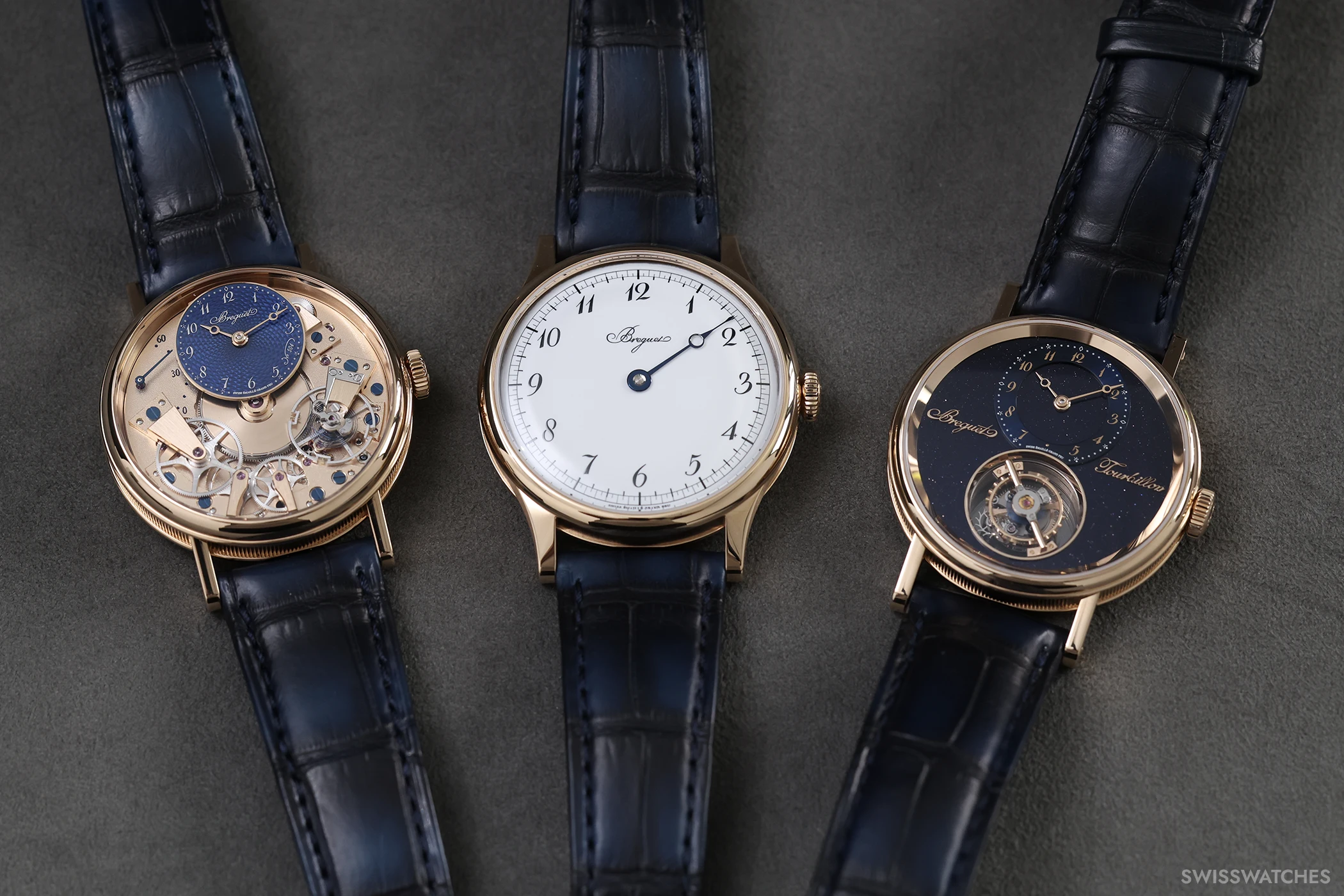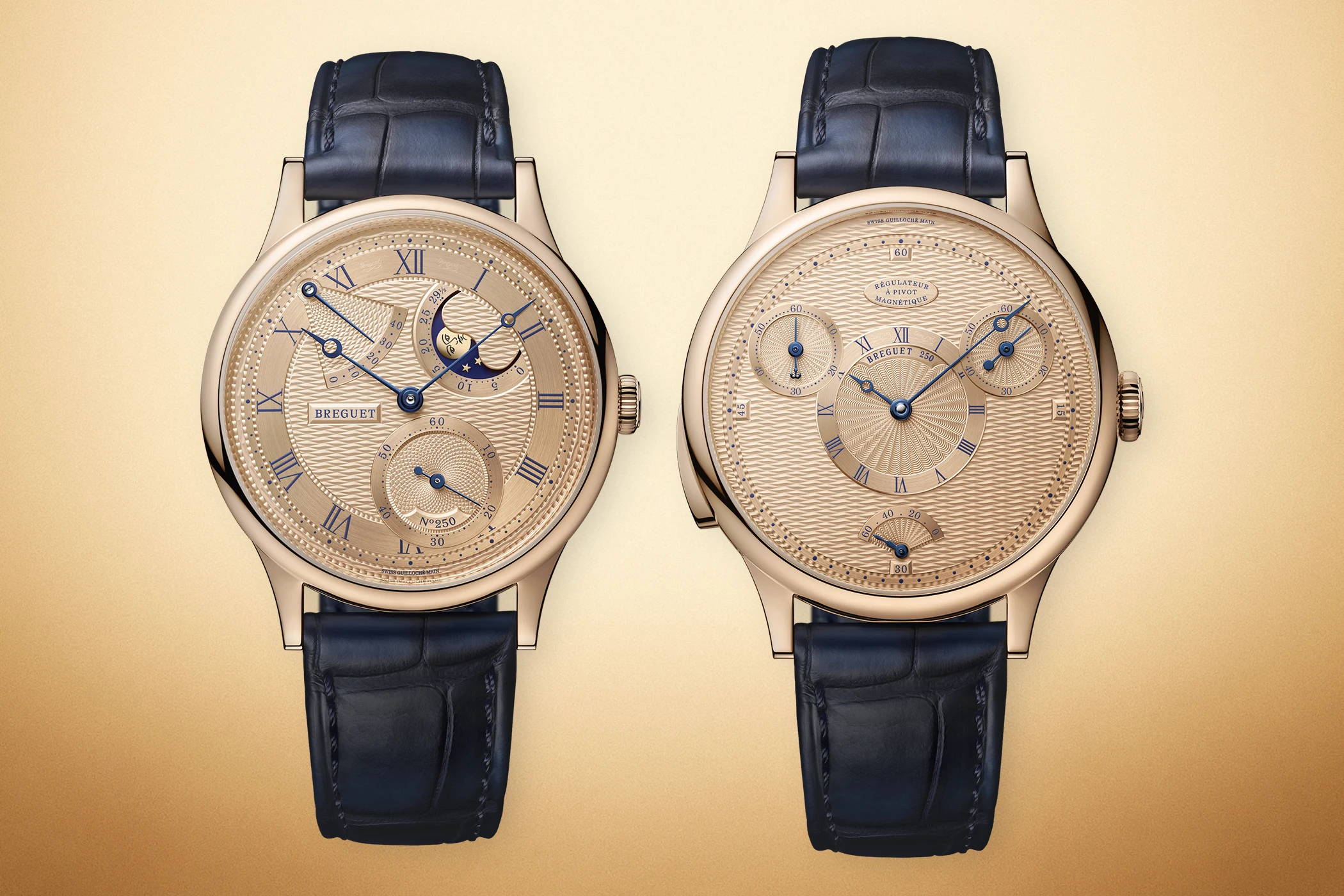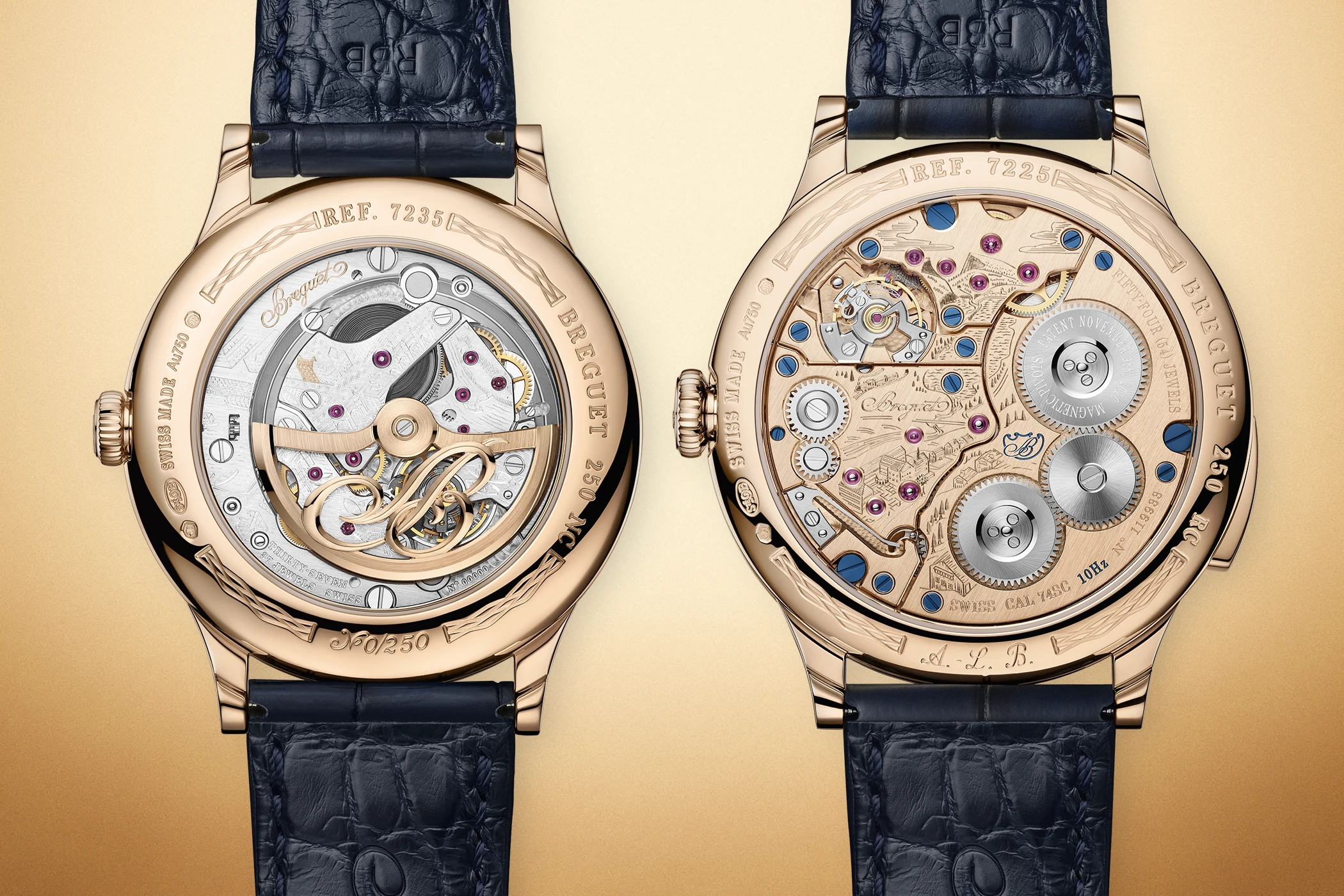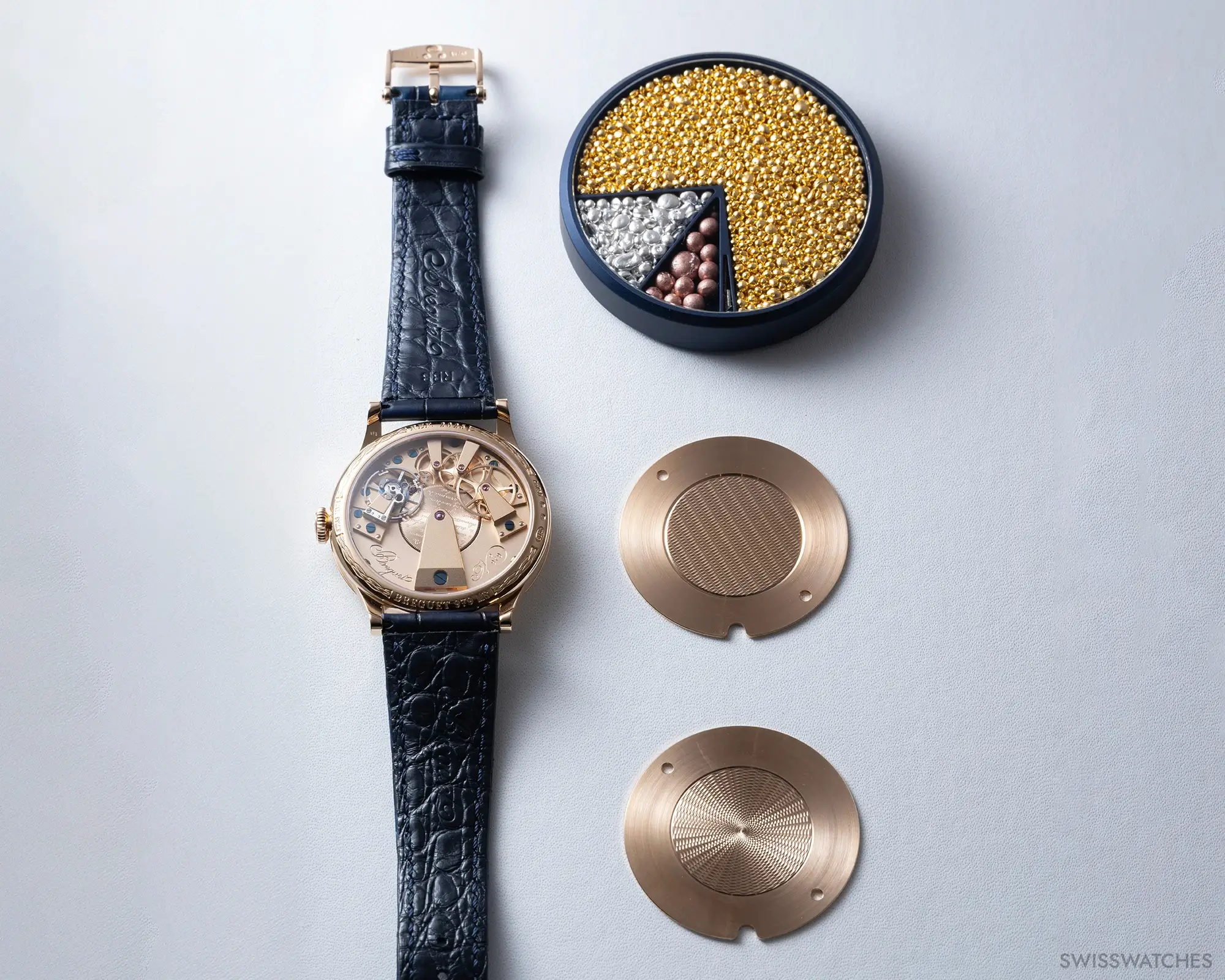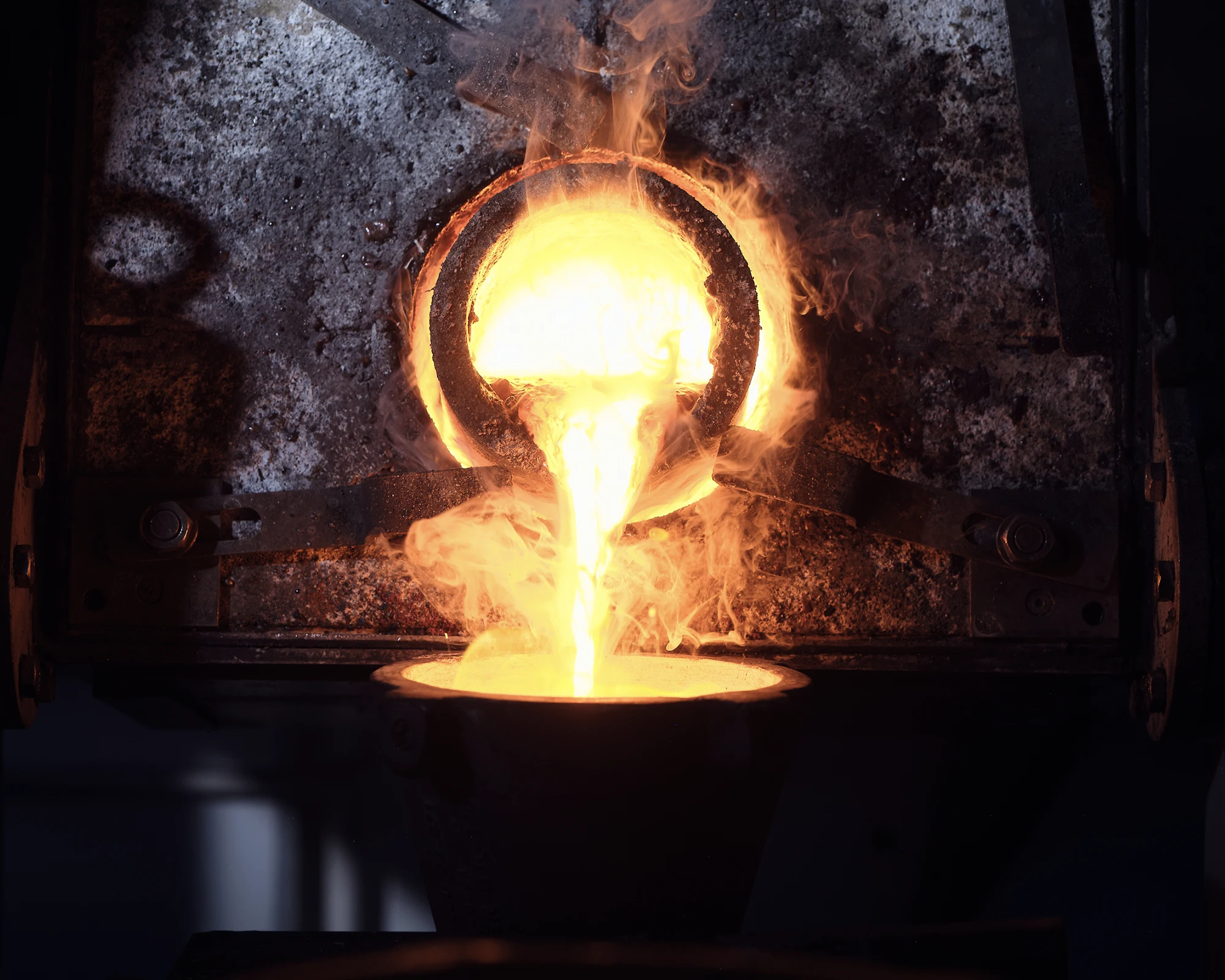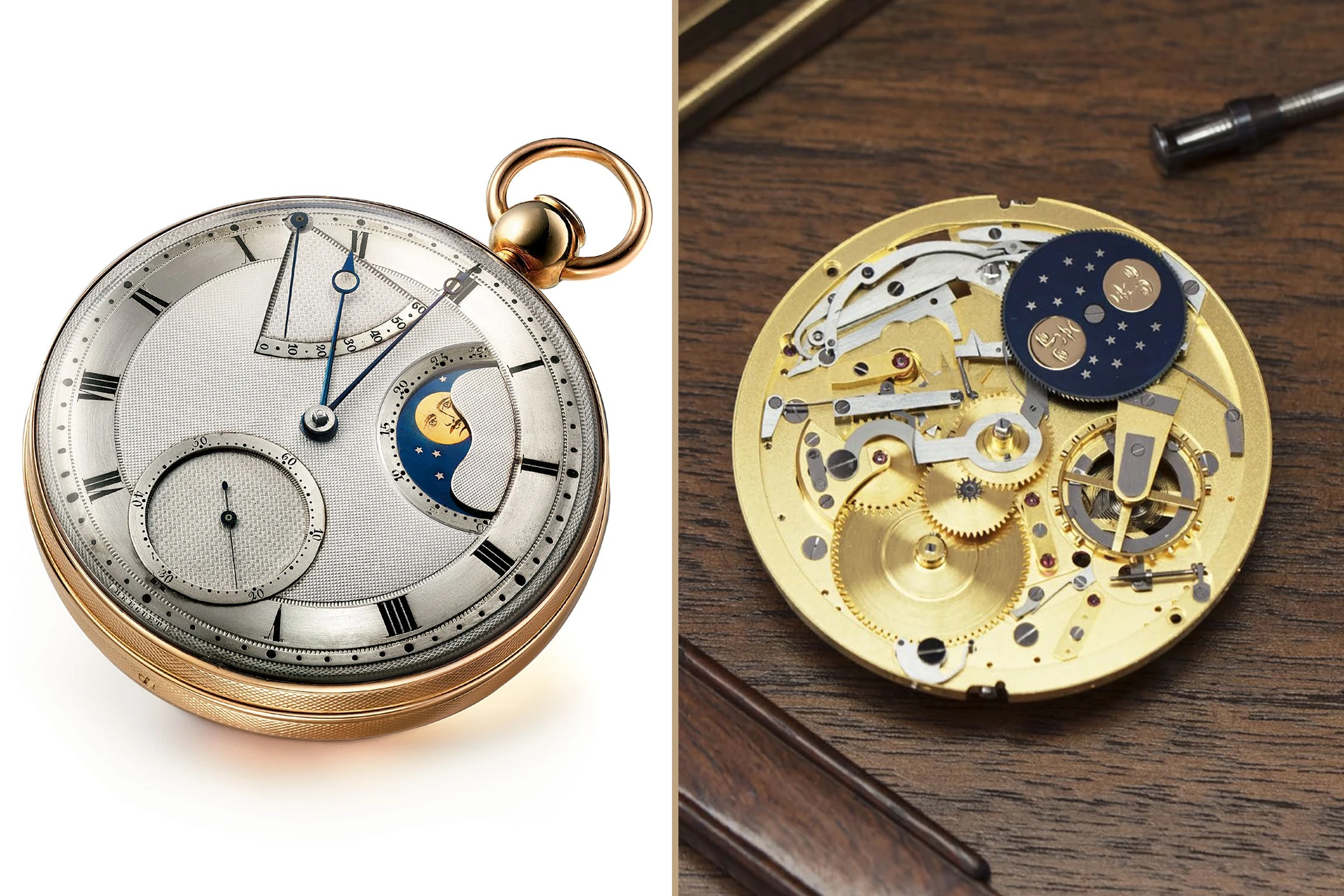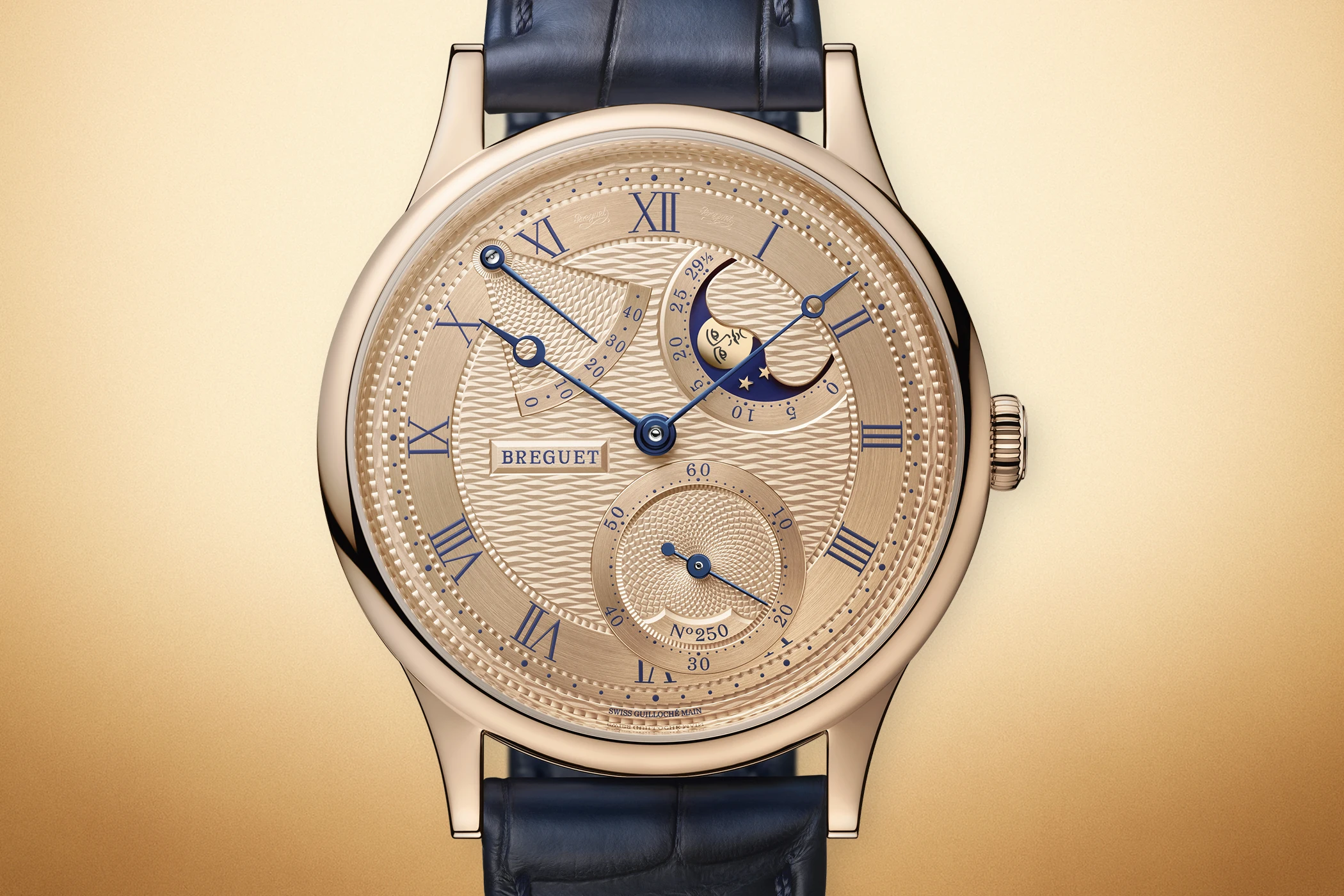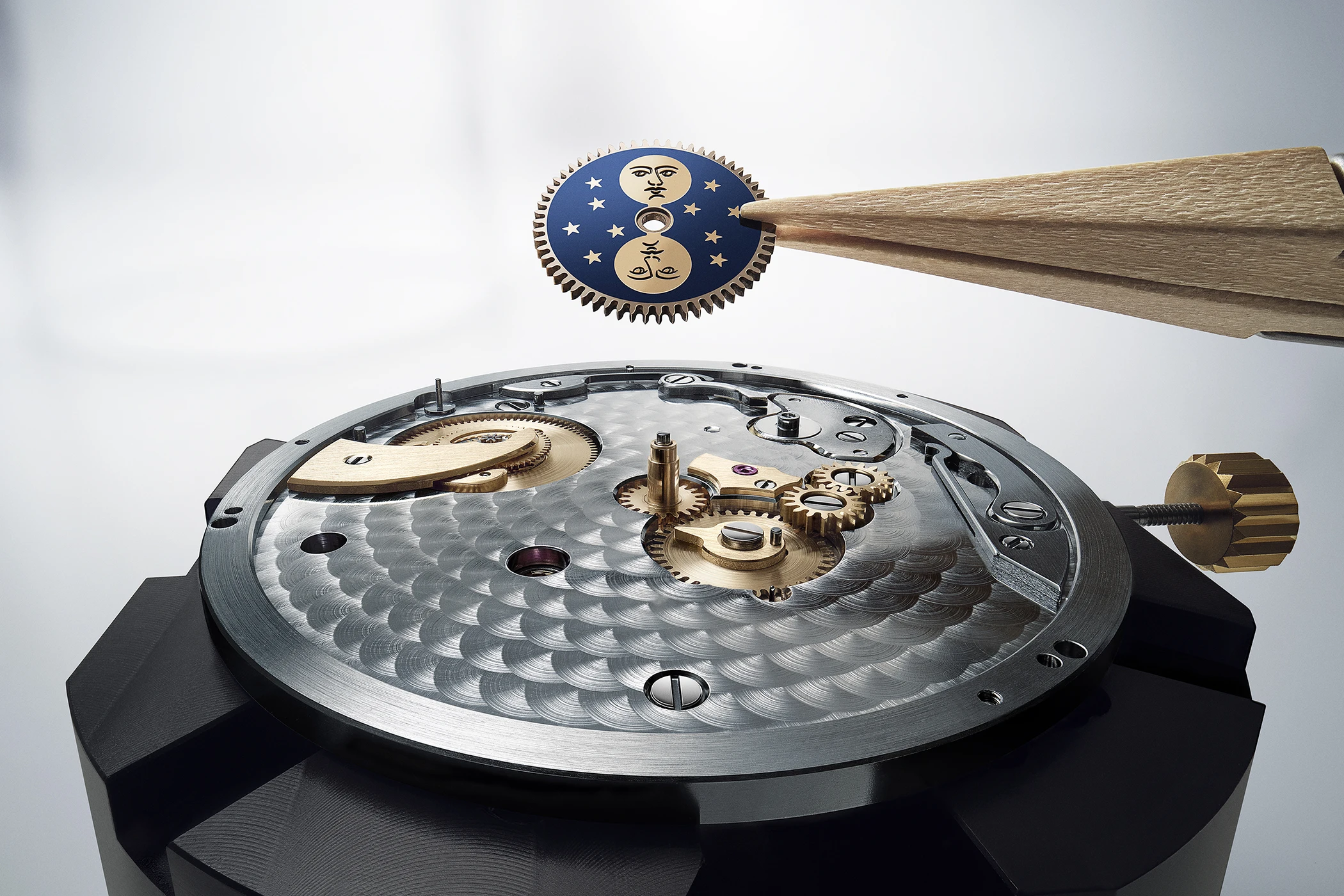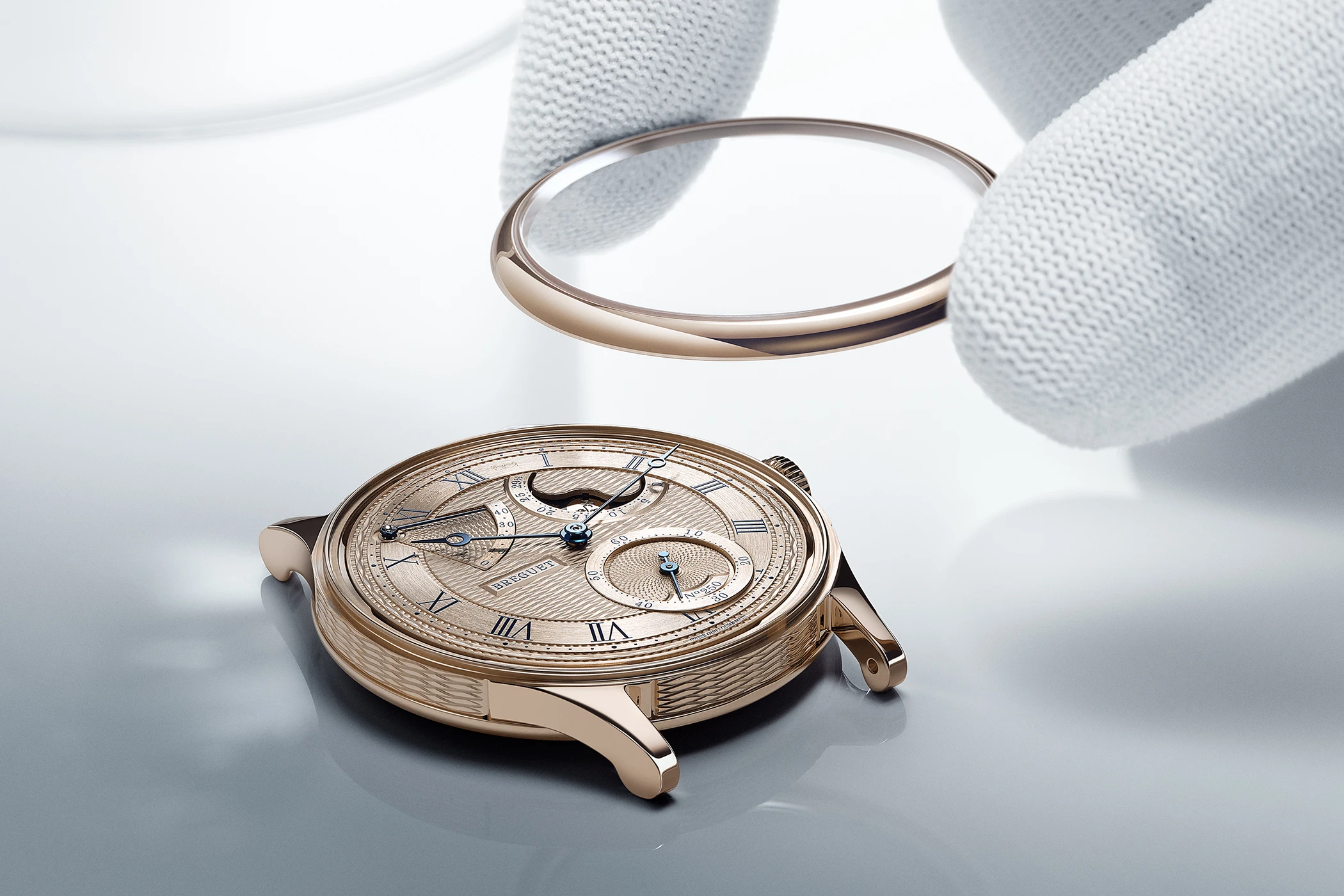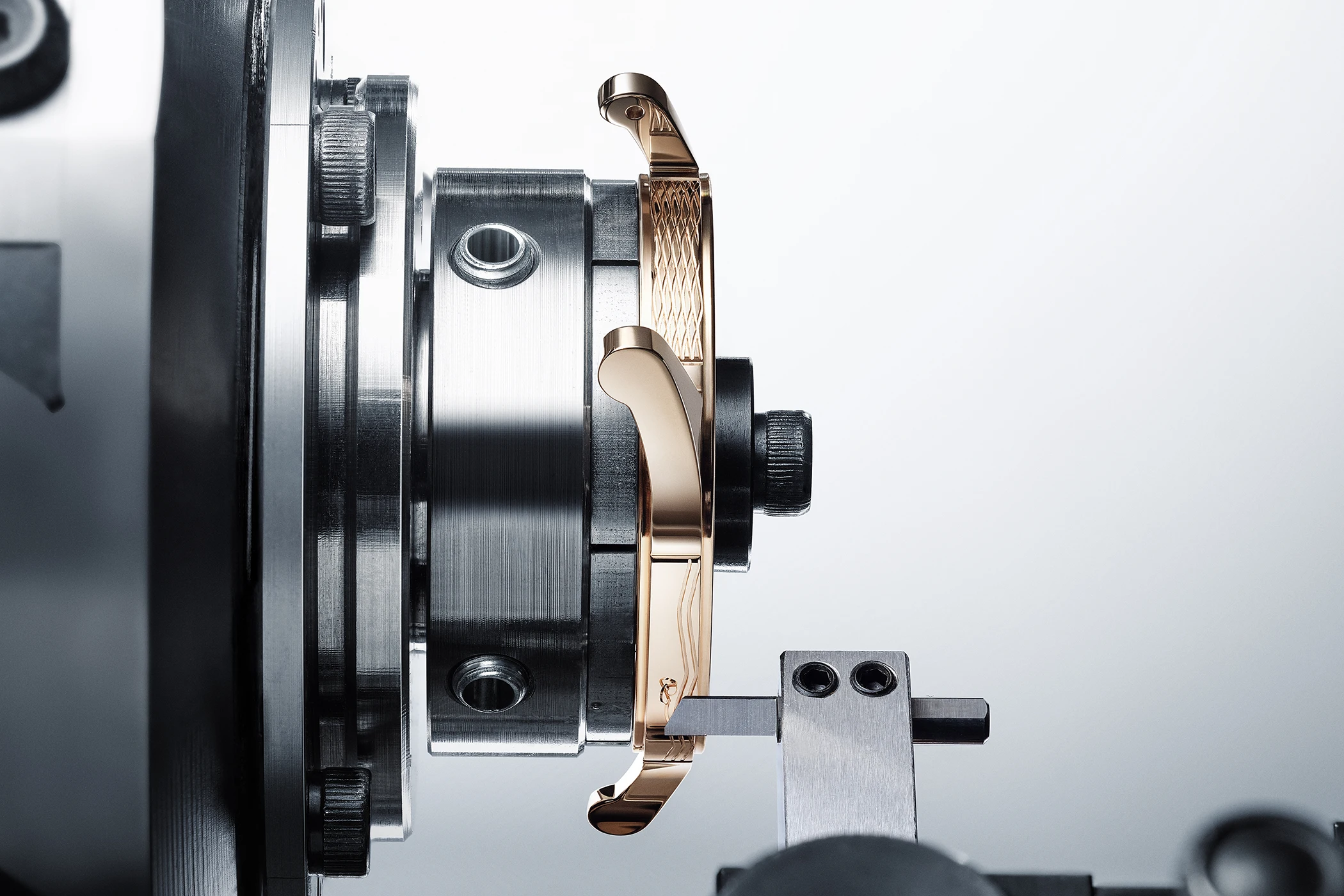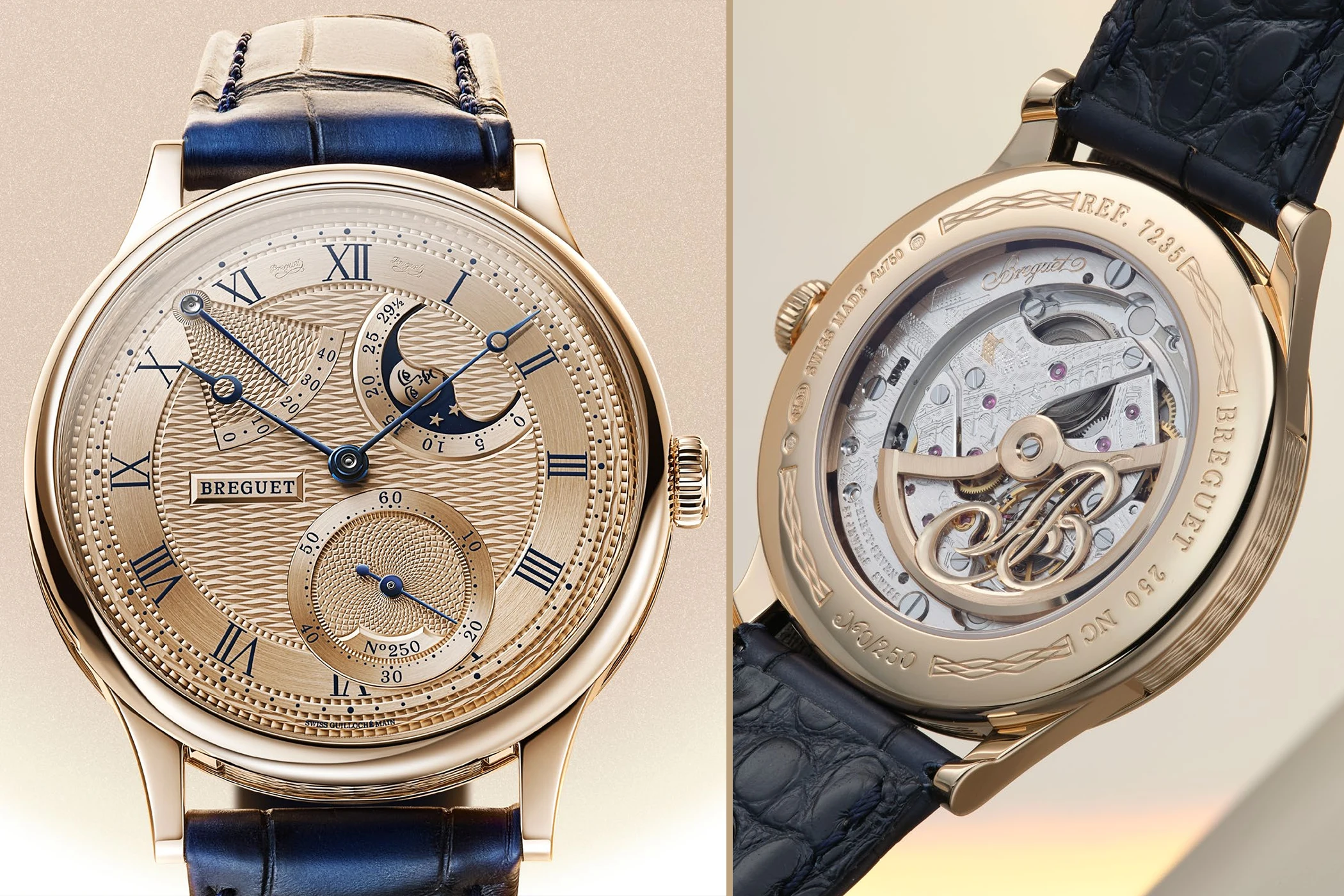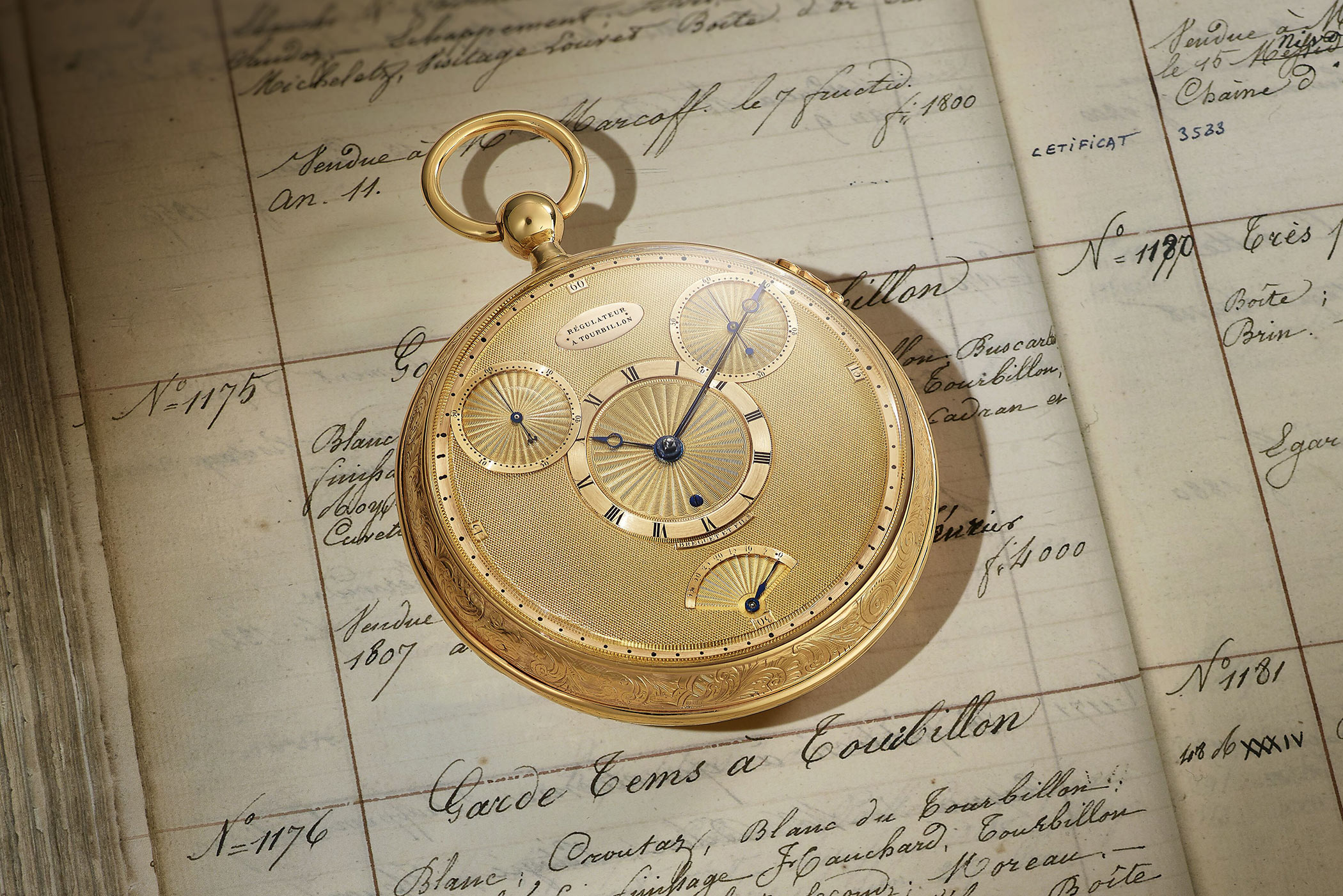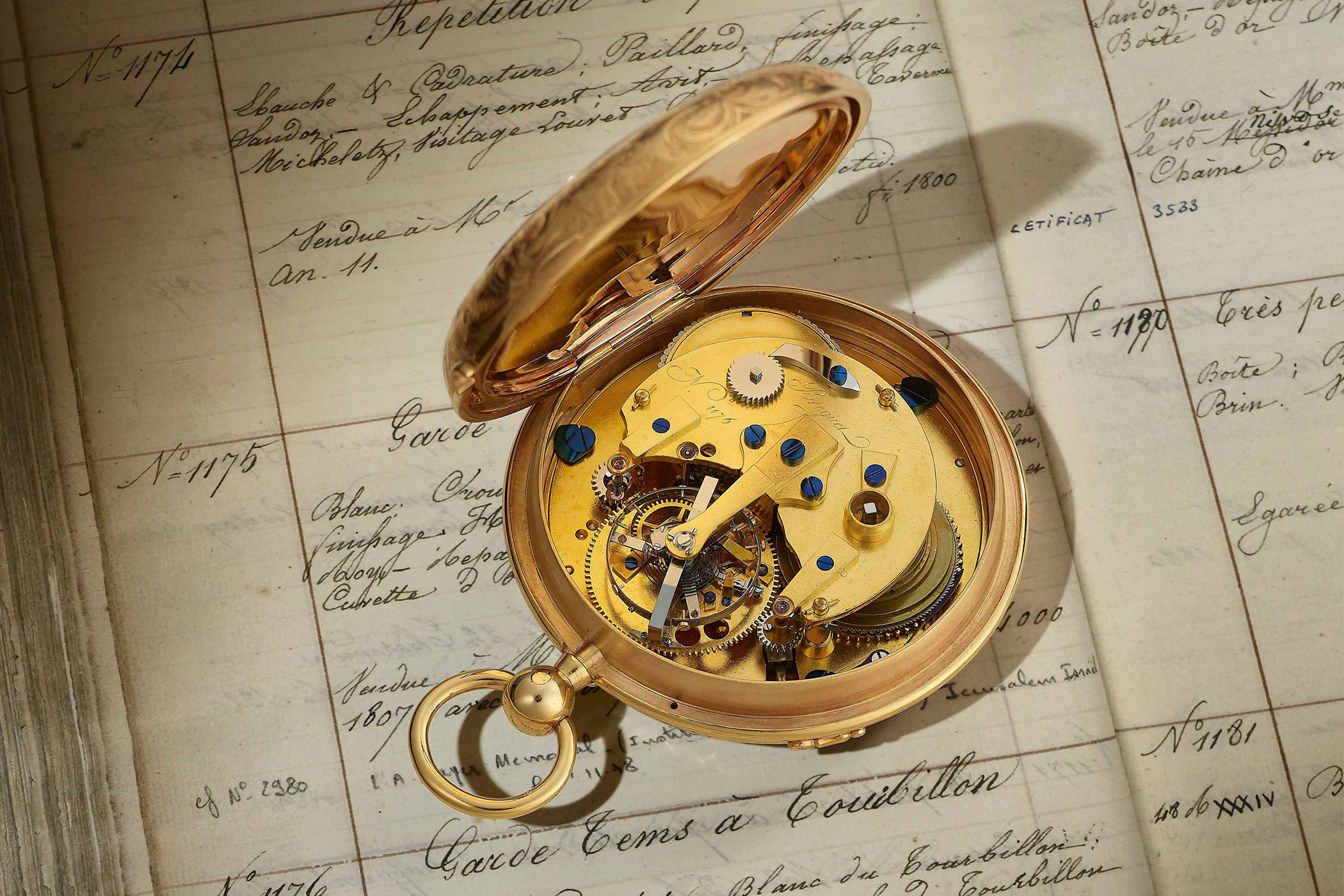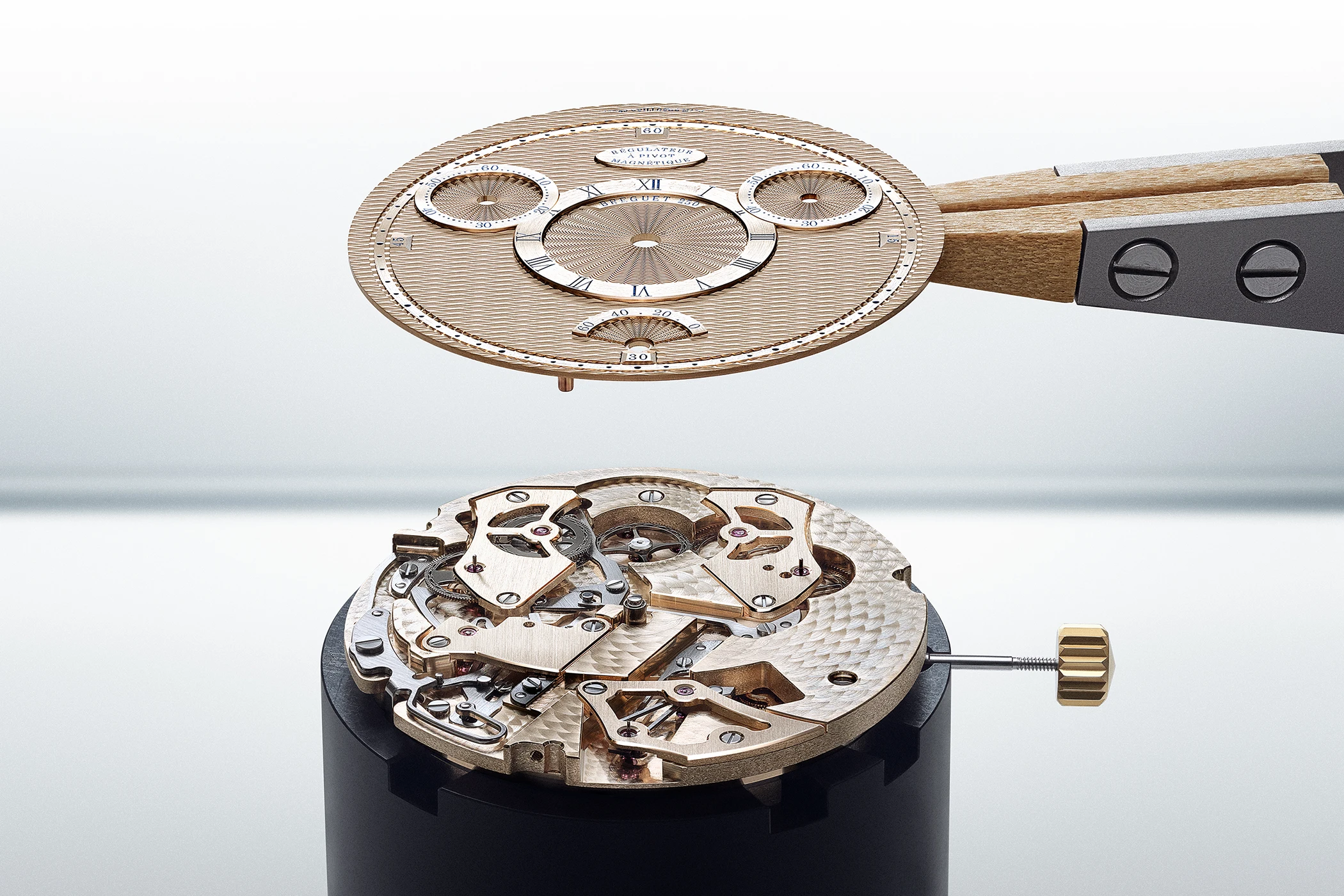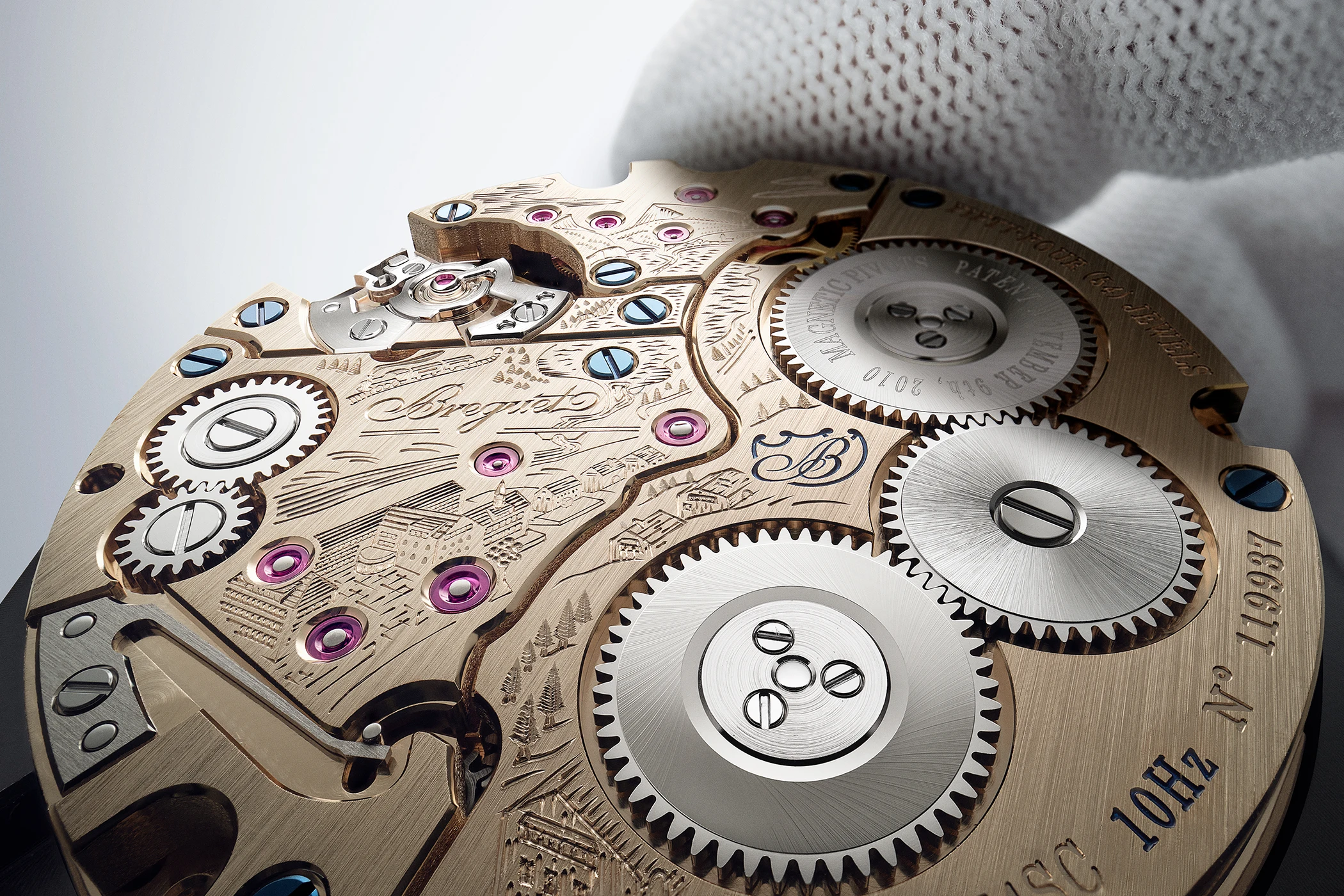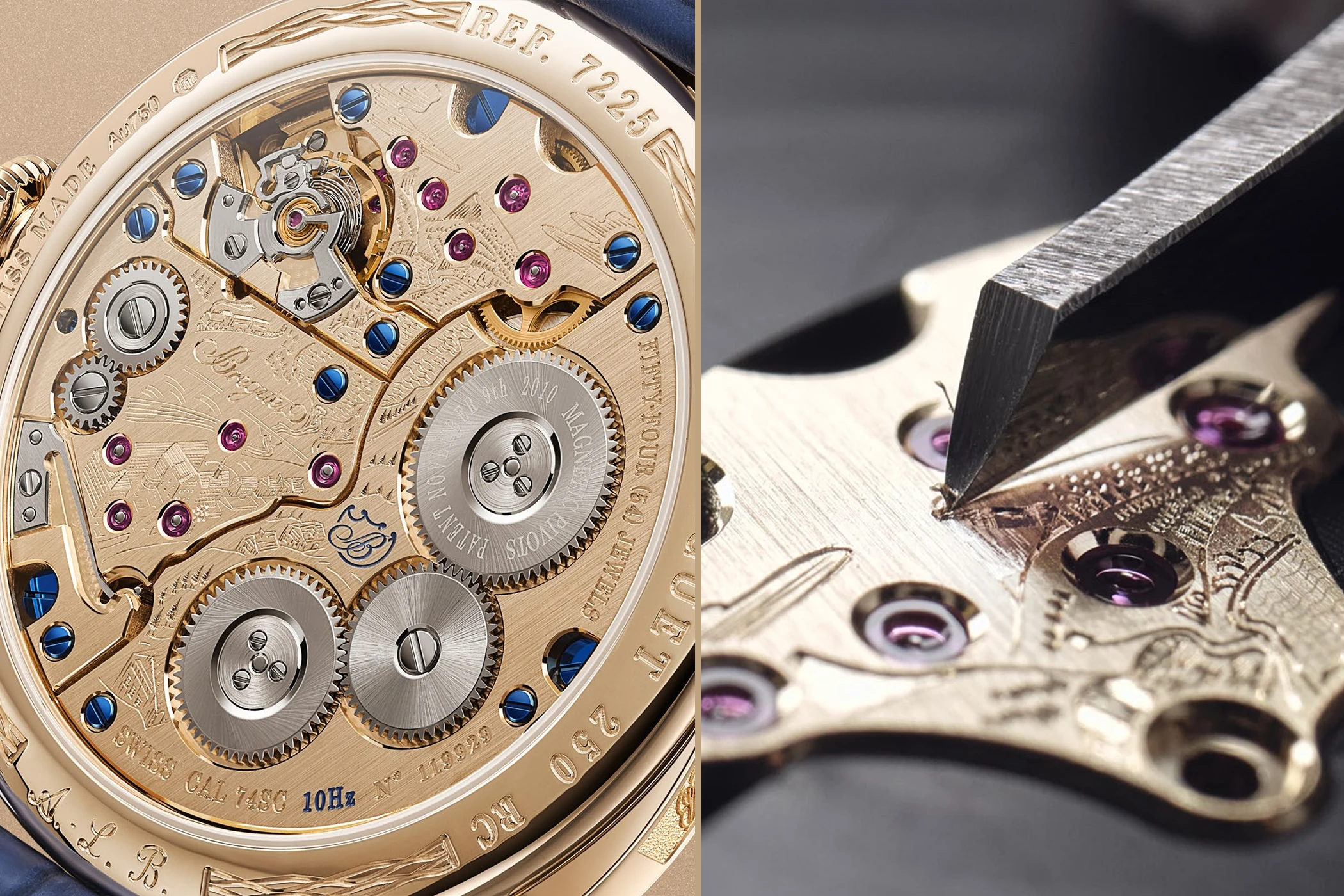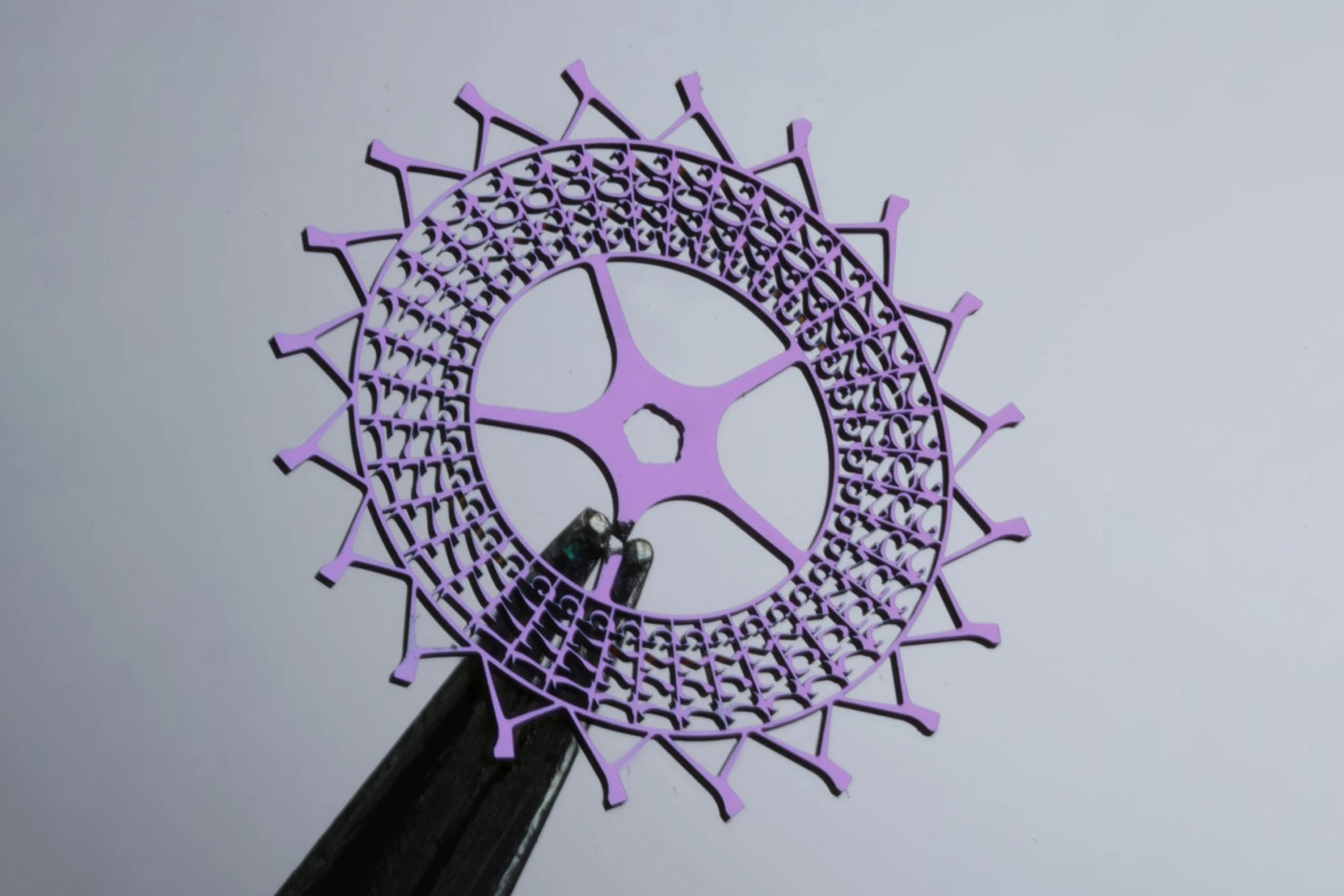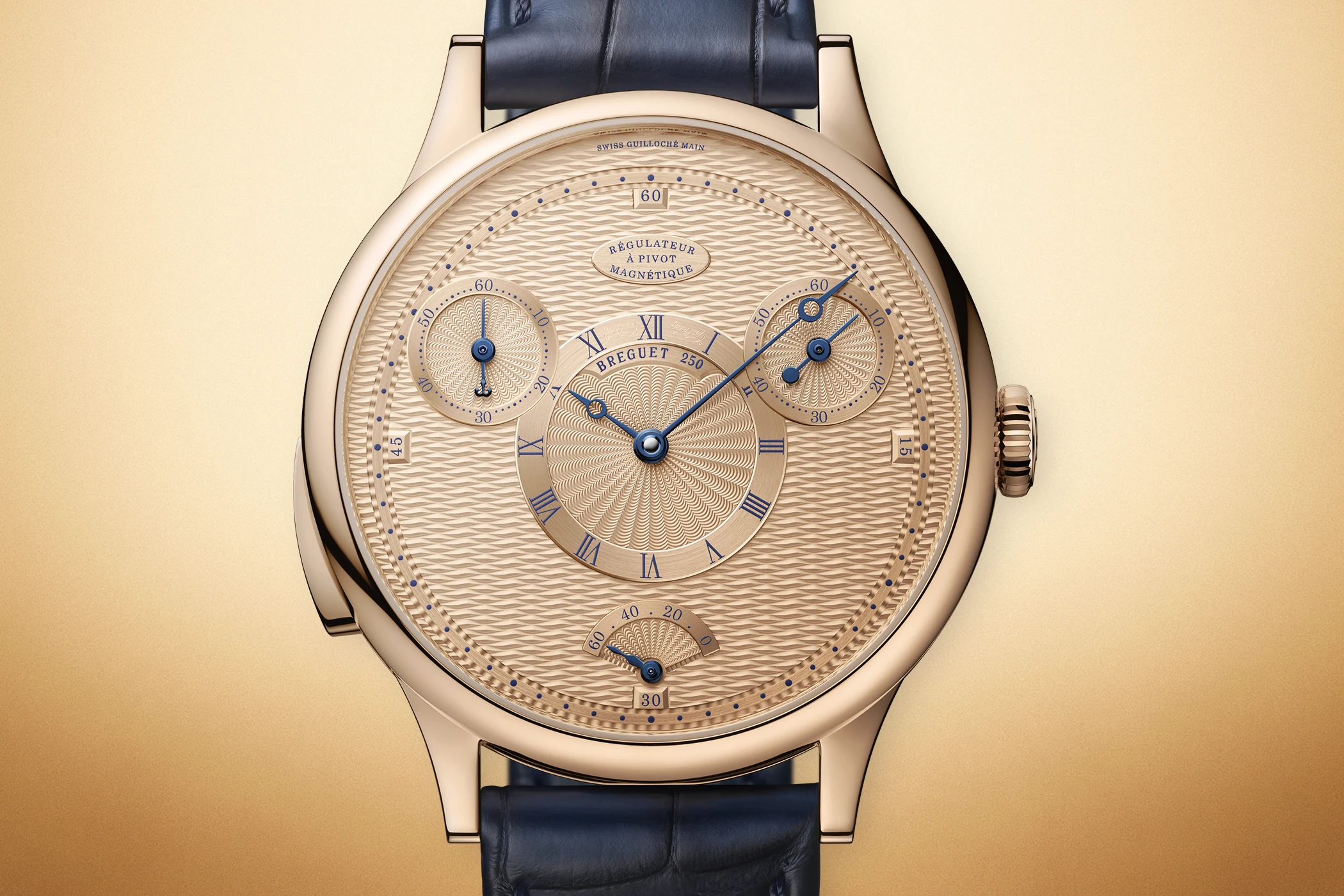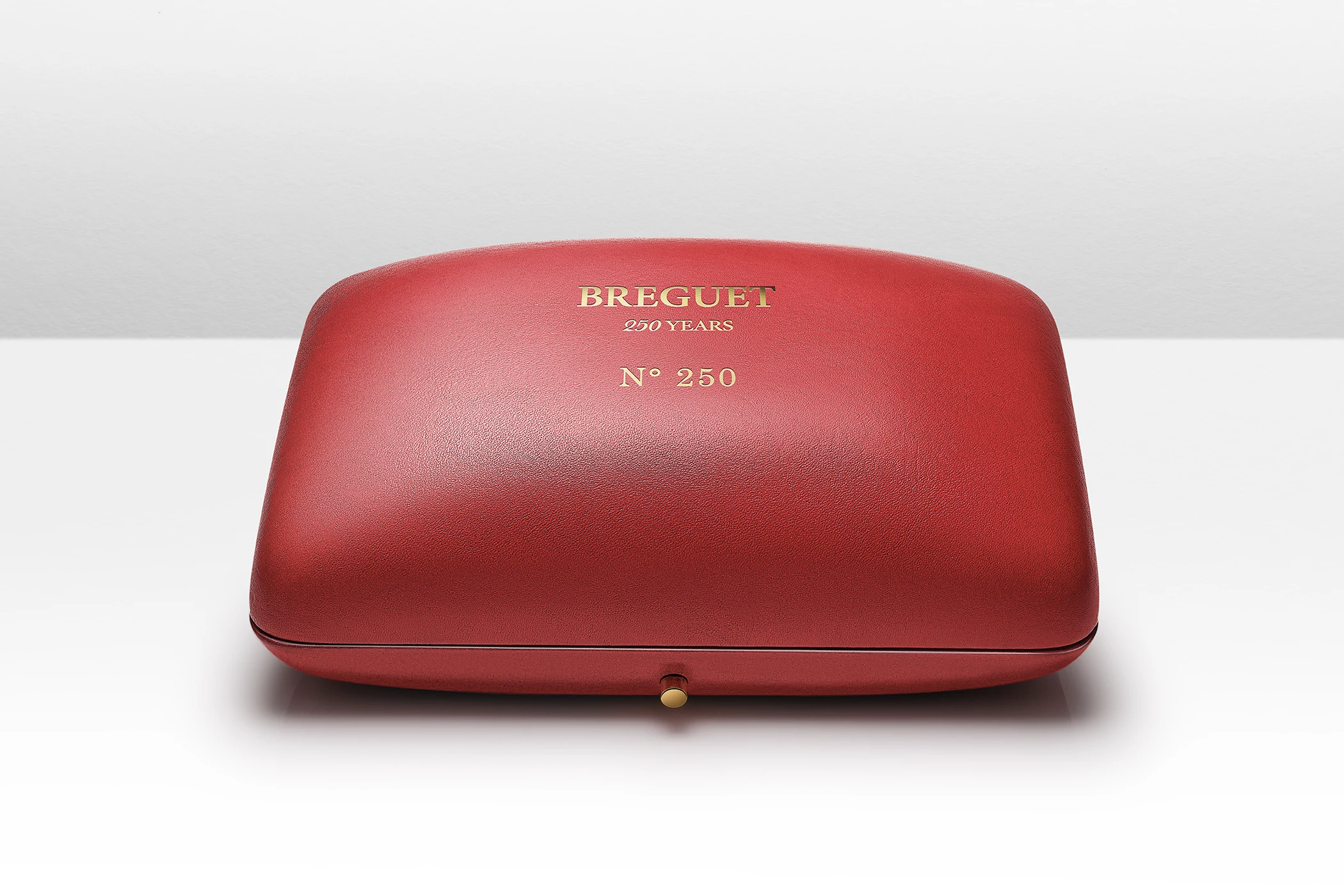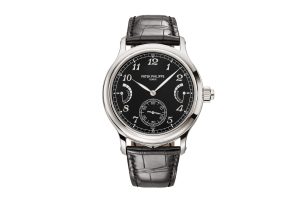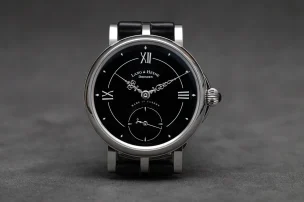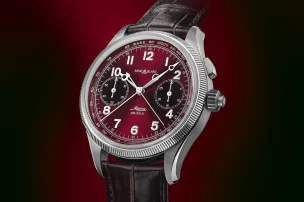
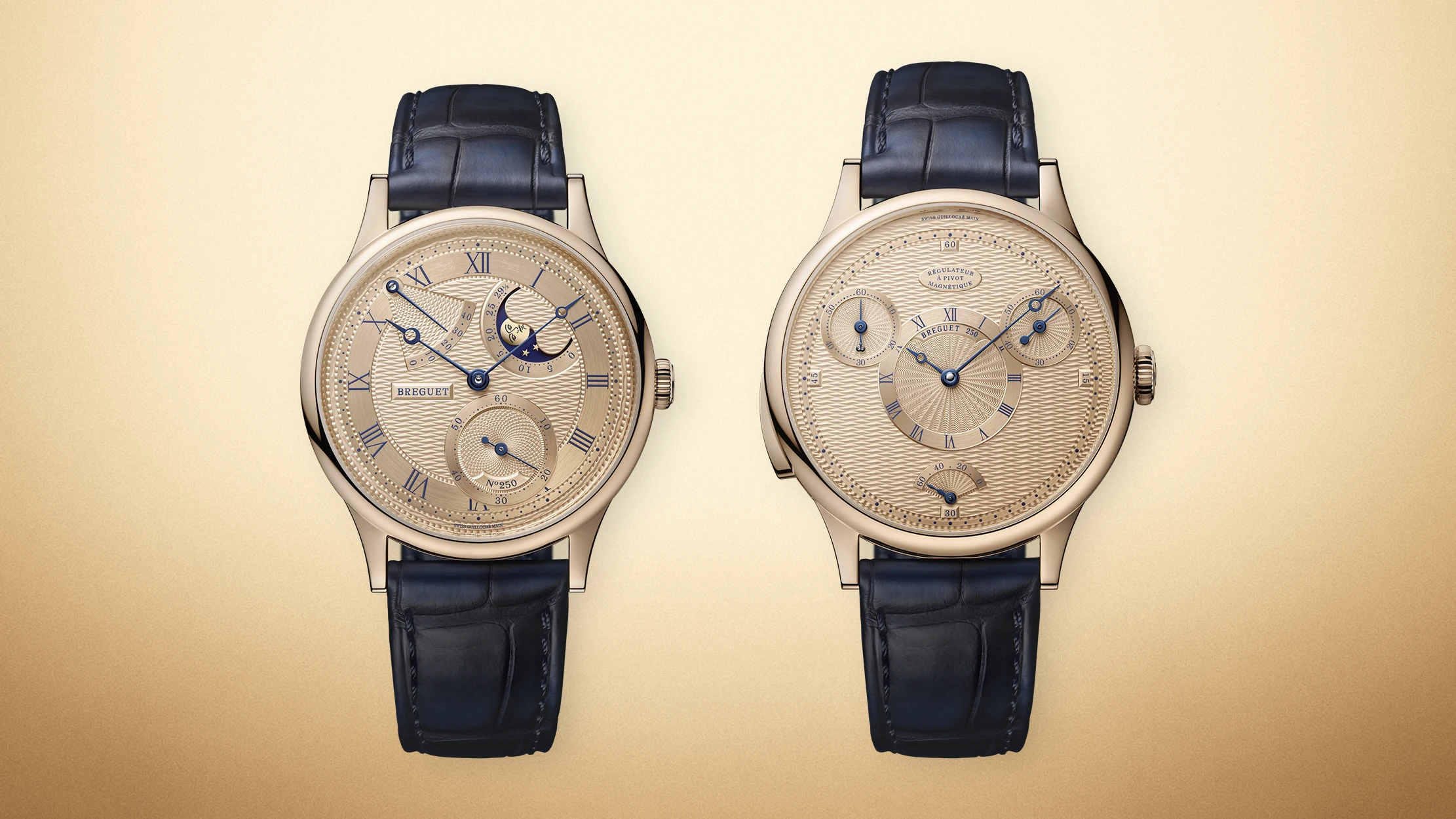
Two Anniversary Models Inspired by Breguet’s Historic Pocket Watches: the Classique 7235 & 7225
To mark its 250th anniversary, Breguet is unveiling a series of commemorative timepieces, each associated with one of the brand’s six core collections – Reine de Naples, Marine, Type XX, Classique, Tradition and Héritage. This approach reflects the fact that Breguet cannot be defined by a single watch or collection alone. All of these timepieces follow a clear formula that runs through the entire anniversary line: each model references, through its construction, important inventions among the brand’s more than 200 patents, while its design pays tribute to stylistic milestones found in historic Breguet watches. In addition, most of the anniversary editions feature a newly developed gold alloy called Breguet Gold, as well as the newly conceived Quai de l’Horloge pattern, which can be found on components such as the dials, cases, casebacks, and oscillating weights.
As part of the 250th-anniversary celebrations, Breguet introduces two further commemorative watches: the Classique Phase de Lune 7235 and the Classique Régulateur à Pivot Magnétique 7225. These two models share several key characteristics – both the cases and dials are crafted entirely from Breguet Gold, both bear the hand-guilloché Quai de l’Horloge motif, and both draw their inspiration from Breguet’s historical pocket watches. Below are all the details on these new releases.
Breguet Gold
Aesthetically, both novelties are defined by the use of Breguet Gold for the case and dial, creating a unified golden appearance. Breguet Gold is a new alloy whose warm, subtly pink hue is inspired by the type of gold used by watchmakers such as Breguet in the 18th century. To achieve this distinctive tone, the alloy consists of 75% gold and is further enriched with silver, copper, and palladium. In addition to its colour, it is highly resistant to tarnishing and ensures exceptional durability over time.
The Quai de l’Horloge Pattern
Both new models also showcase large, engine-turned dials featuring the most extensive application to date of the specially created Quai de l’Horloge motif. But what exactly is this pattern, and what does it represent? The new guilloché design takes its inspiration from the Turgot Map – a remarkably detailed bird’s-eye view of 18th-century Paris. This historical map meticulously depicts the city’s buildings, streets, squares, gardens, and parks. Specifically, the guilloché pattern draws upon the flow lines of the River Seine shown on the Turgot Map, encircling both the Île de la Cité – where Abraham-Louis Breguet’s original workshop once stood – and the Île Saint-Louis.
The Novelties in Detail
The Classique Phase de Lune 7235
While the origins of the Breguet style – which has evolved over more than 250 years – cannot be traced back to a single watch, its essence is most clearly embodied in the Perpétuelle pocket watch No. 5. Delivered on 14 March 1794 to the writer François Jourgnac Saint-Méard, this piece defined the design codes that still shape Breguet’s aesthetic today: a hand-guilloché dial featuring different patterns and a recessed seconds sub-dial, a 60-hour power-reserve indicator, a moon-phase display, an hour ring with Roman numerals, and of course, the signature Breguet hands with pomme-shaped tips. Most notably, the watch was equipped with an automatic winding mechanism – hence the name Perpétuelle, which Breguet gave to his self-winding watches – personally developed by Abraham-Louis Breguet. The system included several improvements, among them a well-balanced oscillating weight, making it significantly more efficient than earlier designs.
The Historically Inspired Dial of the Classique Phase de Lune 7235
The 7235 thus inherits both the complications and the display logic of the Perpétuelle pocket watch No. 5. Hours and minutes are indicated from the centre by flame-blued Breguet hands with pomme tips, while the 40-hour power-reserve indicator sits at 10:30, the moon-phase display at 2 o’clock, and the recessed small seconds – just as on the original Perpétuelle – at 5 o’clock. The hour circle bears Roman numerals, while the subsidiary indications use Arabic ones – all rendered in a matching shade of blue that harmonises with the hands.
The complexity of the dial reveals itself in the interplay of its various guilloché patterns. The inner section of the dial, as well as the centre of the moon-phase display, features the Quai de l’Horloge motif. The small seconds and power-reserve sub-dials each display two distinct concentric patterns whose engraving becomes progressively finer and more precise towards the centre. A third decorative element appears as a circular motif framing the hour ring, as well as the power-reserve and small-seconds displays. One final detail can be found on the moon itself: it bears the same moustached lunar face as that of the Perpétuelle pocket watch No. 5.
The Case
The same depth of decoration can be found on the 39 mm case crafted from Breguet Gold, which measures 9.9 mm in height. For the first time in a Classique case, Breguet replaces the traditional vertically fluted caseband with the horizontal Quai de l’Horloge motif. The rim of the caseback bears the same decoration as well as an engraving denoting the limited edition number – from 1/250 to 250/250 – while the water resistance is rated at 3 bar (30 metres). Breguet has also adopted the lugs from the Souscription model – the timepiece that inaugurated the anniversary celebrations. In contrast to the straight lugs of earlier Classique models, the new design features subtly curved lugs, which not only refine the silhouette but also enhance wearing comfort.
The Newly Developed Movement
For the 7235, Breguet has developed a new movement, the calibre 502.3.DRL, which fittingly comprises 250 components, yet measures only 3.95 mm in height and 32.4 mm in diameter. The automatic movement is wound by a decentralised rotor with a skeletonised oscillating weight, also made from 18-carat Breguet Gold. The movement is equipped with a flat silicon balance spring, while the lever escapement features silicon horns. It beats at a frequency of 3 Hz (21,600 vibrations per hour) and offers a power reserve of 45 hours. Another nod to Breguet’s anniversary and historical legacy appears in the decoration of the movement: it features a hand-engraved segment of the Plan de Turgot – the detailed 18th-century view of Paris that also inspired the Quai de l’Horloge motif.
The Classique Régulateur à Pivot Magnétique 7225
In 1802, Abraham-Louis Breguet embarked on the creation of a series of five watches conceived with one clear purpose: to attain the highest possible level of precision. In pursuit of this goal, he combined several innovative mechanisms of the time, including a tourbillon paired with a natural escapement system. These pieces represented the pinnacle of his achievements in the field of chronometry. To mark its 250th anniversary, Breguet now presents the Classique 7225 – a modern reinterpretation of this technology, inspired by pocket watch No. 1176, produced between 1802 and 1809. This historical watch was among the first four-minute tourbillons featuring a constant-force escapement with a chain-and-fusée transmission, and it was the fifth tourbillon ever sold by Abraham-Louis Breguet.
The Movement
With the new Classique 7225 and its calibre 74SC, Breguet once again pursues ultimate precision, though now through contemporary innovation. The movement incorporates two of the most significant technical advancements in the brand’s modern history. The first is the magnetically pivoted balance staff, patented on 9 November 2010. This construction employs two micro-magnets at either end of the balance staff to generate a magnetic field that stabilises the axis and reduces the influence of gravity. When subjected to shocks, the magnetic restoring forces automatically return the balance staff to its central position. The result is greater amplitude stability and a marked improvement in rate performance across all six positions, thanks to minimal friction. By using two endstones containing micro-magnets at each end of the balance staff, Breguet has created a dynamically stable system that continuously recentres and self-corrects – assuming in the modern wristwatch the very role the tourbillon once played in the pocket watch.
Secondly, Breguet enhances rate stability and improves the rapid correction of positional errors by operating the movement at a high frequency of 10 hertz, or 72,000 vibrations per hour. This technology, first introduced in a Breguet wristwatch in 2008, would have been virtually impossible to realise in the era of pocket watches. According to Breguet, the combination of these innovations in the Classique 7225 and its calibre 74SC results in a maximum deviation of ±1 second per day, with a power reserve of approximately 60 hours.
Another distinctive feature of the movement is its escape wheel, which presents a phenakistiscope-style animation alternating between the years “1775” and “2025”. This visual effect is made possible by the 10-hertz frequency, which allows the wheel’s rotation to display twenty frames per second.
The Design of the New Model
The 41 mm case, measuring 10.7 mm in height and made of 18-carat Breguet Gold, features a hand-guilloché caseband decorated with the Quai de l’Horloge motif. Through the sapphire crystal caseback, the magnetically pivoted balance is visible in operation. A pusher positioned at 8 o’clock serves a specific functional purpose, which becomes clear when examining the dial layout. The watch’s design takes its cues from its historical reference, pocket watch No. 1176. It features a small, fan-shaped power-reserve indicator at 6 o’clock (35 hours in the original, now 60 hours), a hand-guilloché dial bearing the Quai de l’Horloge motif, and two small seconds subdials at 2 and 10 o’clock. Although they may appear identical at first glance, as already found on reference 1176, their functions differ: the subdial at 2 o’clock displays a traditional running small seconds, operating continuously throughout the power reserve, while the subdial at 10 o’clock acts as an observing seconds counter, which can be reset by pressing the pusher at 8 o’clock. This mechanism allows the measurement of intermediate intervals or the duration of two simultaneous events.
Availability and Pricing
Both new models are presented in individually numbered red leather cases, inspired by the red Moroccan-leather boxes historically used by Breguet. The Classique Phase de Lune 7235 is produced in a limited and numbered edition of 250 pieces, priced at €75,500, while the Classique Régulateur à Pivot Magnétique 7225 is not limited and is priced at €87,100.
